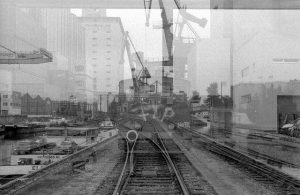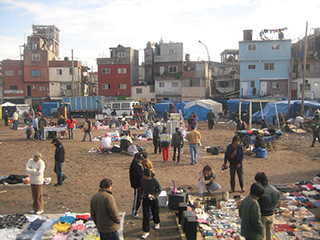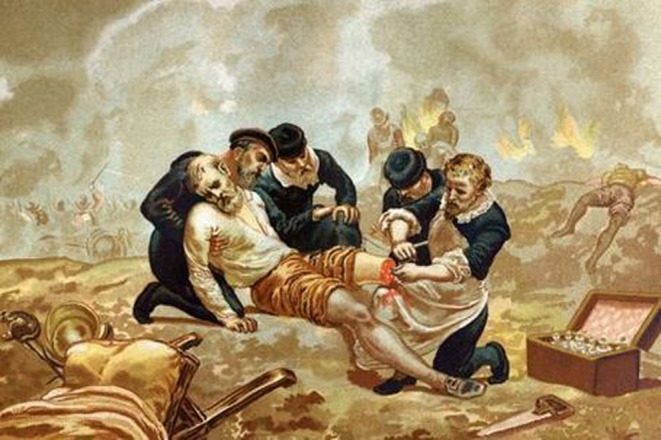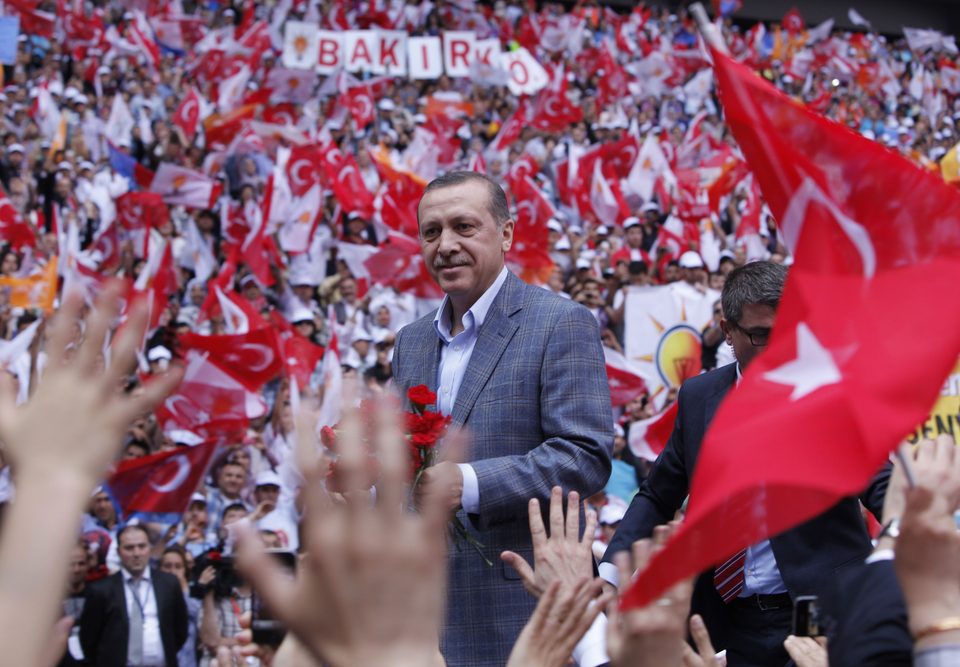


Obama facing crisis
13 October 2017
What has become of slum children?
21 February 2018Increasingly large and important metropolises
![Huangpu River and Yangtze River in Baoshan District, Shanghai By 韩笃一, [Public domain] Huangpu River and Yangtze River in Baoshan District, Shanghai By 韩笃一, [Public domain]](https://www.sciencespo.fr/research/cogito/wp-content/uploads/2017/10/Huangpu_River_and_Yangtze_River_in_Baoshan_District_Shanghai-300x225.jpg)
Huangpu River and Yangtze River in Baoshan District, Shanghai By 韩笃一, [Public domain]
Many large metropolises are also accumulating social and cultural resources that distinguish them from the rest of their national territory, as is the case of London, Tokyo, Istanbul, New York, Paris, Buenos Aires, Mexico, São Paolo, Lagos, Shanghai, Kuala Lumpur and Cairo.
The need for new approaches
The different disciplines have a hard time grasping these large metropolises. A major effort to describe and conceptualize them is being pursued around the world, but the research is not persuasive yet. Geographers outdo each other in imagining ways to characterize so-called global city regions, or urban corridors, on the basis of indicators such as size, resource concentration and the centrality of flows and networks.

Image of Earth at night, satelliteSuomi NPP/NASA 2012. CC0 Creative Commons
Sociologist Saskia Sassen wrote the reference work “The Global City: New York, London, Tokyo” in 1991, articulating globalization and urbanization processes. She put forward the most sophisticated and coherent model of the global city to describe this type of metropolis governing globalization flows…. But for all its qualities, the model has not been confirmed by empirical research: globalization and urbanization go hand in hand at different city scales.
Convinced of the need to develop another interpretive framework, “Cities are back in town”, an interdisciplinary and inter-laboratory research group created at Sciences Po at the beginning of the 2000s and affiliated with the Urban School, decided to explore the forms of governance of large metropolises, their underlying tensions and dynamics, their difficulties, their growing resources and the elites’ capacities for action.
Powers traditionally in competition with States
Metropolises are not just about figures and globalized societies: they also raise political issues that are critically important given that cities have often destabilized states. In his famous analysis of the “Western city”, Max Weber established a very clear link between the advent of market capitalism, the entanglement of capacities to exercise political authority and the golden age of European cities between the 14th and 16th centuries. As feudalism disappeared and States formed, the vigorous development of market capitalism and of the bourgeoisie went hand-in-hand with the rise of cities as more or less autonomous actors, culminating in city-states and the Italian urban republics.
Renewed competition

Hong Kong Airport. Public Domain
In the 21st century, the scale of capitalism changed as it became immaterial and globalized. States partly lost their quasi-monopoly on political authority, which was now also wielded at the European, international and transnational levels in partnership with private actors (major businesses), international organizations and NGOs. At the same time, forms of city-states reappeared as centers of transportation, logistics, finance and tourism, such as Hong-Kong, Dubai and Panama. Major metropolises also formed networks, such as the C40 group. The networks gradually acquired visibility and legitimacy, to the point of sparking a debate around the creation of a new United Nations agency, UN Urban.
A well-established but undeserved reputation: un-governability
Several schools of thought inspired by classical theories have focused on the un-governability of metropolises: the failure of public policies, the collapse of urban planning and the insignificance of political regulation. These include the Los Angeles school’s “post-colonialism”, which focuses on the “post-metropolis”, Henri Lefebvre-based studies on the general urbanization of the world and the critical geography inspired by French philosophers like Deleuze, Guattari, and Rancière, not to forget the major influence of the sociology of science and technology, of networked actors and of assemblies.
These schools of thought essentially see megalopolises as areas of disorder, experimentation, strangeness and informality; spaces that display and create massive inequalities and segregation; fertile ground for corruption and informal and criminal economies; living areas with underfunded services and infrastructure; congested and ever-expanding monstrosities; and homes to major mobilizations and revolts, and to incomplete sociotechnical systems.
Metropolises do not just equate with ungovernable chao
However, the findings of the collective research program initiated at Sciences Po five years ago (What is governed and not governed in large metropolises: Paris, London, Mexico, Sao Paulo) show the growing importance of public policies in metropolises and the development of regulations that remain incomplete and discontinuous forms of governance, but that continue to grow. The contributions to this issue of Cogito make the same point: metropolises do not just equate with ungovernable chaos.

Harbor by Thomas. Flickr CC BY-NC-ND 2.0
A common agenda is starting to form around the challenges that megalopolises must address. Many of these are presented and illustrated here: waste (The waste crisis and urban fabric in Beirut, Eric Verdeil ; How waste disrupts power relations in Lagos, Côme Salvaire), violence and the distribution of power (Karachi: Ordered Disorder, Laurent Gayer), rethinking urbanism (Divided cities: between fragmentation and integration, Marco Cremaschi), risks (The metropolises of risk, Olivier Borraz), slums (The slums of Mumbai, regulated anarchy, Sukriti Issar), digital technology (Data’s effect on urban governance, Antoine Courmont) and migrations (Migrations internationales : les mégalopoles, lieux d’inclusion ou vecteur, Virginie Guiraudon)
Other issues include access to services and infrastructure, the organization of mobility, tax-raising powers, the mobilization of resources for major events, democracy, the fight against climate change, etc.
These contributions also demonstrate the expanding role of actors other than public authorities: businesses, associations, the army, the mafia, etc. These dynamics appear elsewhere and in other forms, such as in Brazil and Africa, with the growing influence of Pentecostal churches and the emergence of new self-governance groups in squats and slums.
Yet governance is not necessarily a good thing. The “dark side of governance” should not be underestimated: gangs (in Managua), families of annuitants, police involved in the organization and management of drug trafficking, the violence of warlords in Somalia and ethnic and religious violence.
Metropolises as centers of innovation

Les Grands Voisins @ Paris par Guilhem Vellut CC BY 2.0
Despite all the difficulties that metropolises are experiencing, they have certainly proven to be creative: they develop effective and extensive transportation networks with dedicated buses, metro systems, bicycle paths, trams and carpooling platforms. They implement innovative social policies, especially in Latin American metropolises, even as the number of recipients continually grows, especially in Africa and in Asia. The emergence of legal innovations has also changed the situation with regard to informal and illegal housing. Finally, international banks and sovereign wealth funds (Chinese and Qatari) are investing in their infrastructure, ports and airports, for better or for worse.
Thus, metropolises are not just subjects. In addition to becoming key political actors in globalization in conjunction with the States, transnational organizations and major banks and businesses, they are laboratories of democracy and perfect evidence of the possibilities and impossibilities of political regulation.
Patrick le Galès, dean of the Urban School, CNRS research director and professor at Sciences Po, Center for European studies and comparative politics
Tommaso Vitale, research head of the Urban School’s masters on “Governing the large metropolis”, Associate professor of sociology at the Center for European studies and comparative politics.
Retour au sommaire <-> Article suivant : Des villes fracturées




